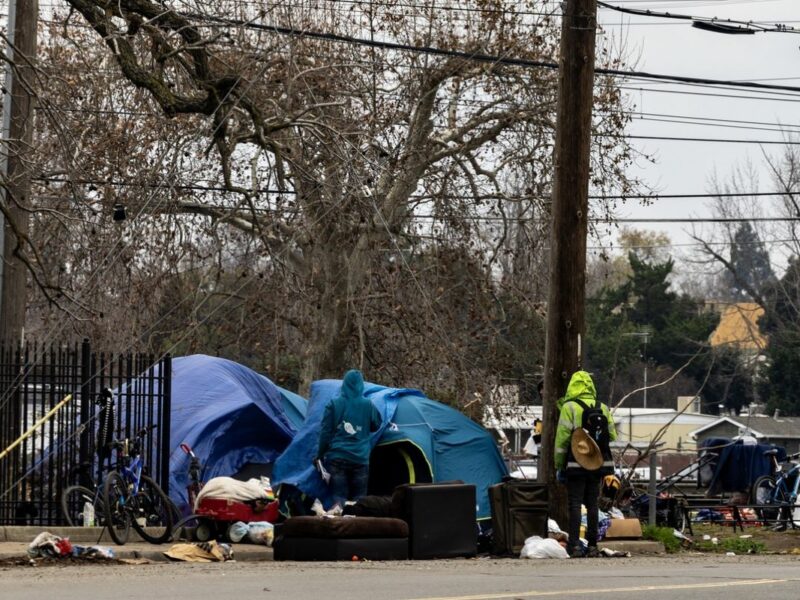It’s Designed to Make You Give Up on Ever Receiving Benefits
Anyone who’s filed their taxes or tried to update their driver’s license knows how difficult to navigate government systems can be, even for the simplest of tasks. For unhoused people, that difficulty is dialed up to eleven. So many rules and red tape prevent people in need from receiving benefits they’re entitled to. All the paperwork and appointments are difficult for most people to manage, even with a dedicated caseworker. It’s designed this way on purpose.
The more people the system can grind down, the fewer people that will receive benefits. Given how many resources are spent in this seemingly endless back-and-forth of applications, denials, and appeals, it’s not exactly a cost-saving measure. But it does assuage the Puritanical objections many Americans feel when giving out “free money” to poor people who haven’t “earned” it.
Maybe in a way, we see successfully navigating this maze of hostile bureaucracy as a way of working for your money. We have to make it hard so people can maintain the illusion that everyone earns what they get and gets what they’ve earned.
Different Systems, Same Red Tape
Whether you’re applying for housing assistance, unemployment benefits, disability, or any other arm of America’s crumbling social welfare program, the application process will be similarly convoluted. Of course, not similar enough to give you a leg up on the others once you’ve completed one. Just similar enough that they produce the same feeling of despair and hopelessness.
For many of these programs, the application process differs from state to state and sometimes even from county to county within a single state. That leads to a wide variance in rules regarding who can apply and where, how applications are handled once received, and ultimately who gets benefits.
Political motivations can even influence these things, as we’ve seen in Florida, where the unemployment system was deliberately understaffed and poorly designed to keep unemployment numbers from the state artificially low.
And don’t think you’re home free once your application has been approved.
Not only are there waiting lists and funding problems for many of these programs, but there are also webs of arcane rules and restrictions you must follow and then adequately prove that you followed to continue receiving benefits. Depending on the program, you could need to keep supplying documentation and proving yourself eligible as often as annually, every six months, or even weekly.
Added Stress in a Stressful Time
An aspect that many people who have never needed to navigate these systems don’t often think of is that by the time you need to access these benefit programs, you’re already under a lot of extra stress from your general life circumstances.
Whether you’re newly unemployed, dealing with a disabling health condition, or navigating homelessness, you’re likely not in the best frame of mind to fill out pages and pages of paperwork, gather documentation, and attend inconveniently scheduled interviews. Yet this is what we ask of people.
We ask them to take time off work to attend interviews- essentially costing them money as we’re trying to ensure they make little enough money to qualify for a specific program. We ask them to check in frequently, even as they’re juggling doctor’s appointments or trying to find a new job.
The system is even more unfriendly for people who don’t read well, don’t speak English as their first language, have intellectual disabilities, or are dealing with certain health conditions that make recalling information and understanding legalese even more difficult. Adequate accommodations for these challenges are few and far between, leaving the most vulnerable people out of luck during their most difficult times.
We’re More Concerned With Preventing Fraud Than Preventing Poverty
The root problem in these disparate systems is that they’re not actually designed to help people the best way we know how. They’re designed, first and foremost, to prevent fraud.
We focus on ensuring that as few “undeserving” people as possible get benefits rather than ensuring everyone who needs them has them.
This is the mindset that we need to shift.
Cases of fraud in social welfare programs are much lower than some of us like to imagine: somewhere in the neighborhood of 1 to 2 percent of all applications are fraudulent. That number includes both malicious fraud and people who make innocent mistakes on their applications.
So, it’s reasonable to assume that making these applications easier to fill out and clarifying eligibility requirements in plain language could actually reduce fraud overall by reducing the incidence of those types of mistakes.
Frankly, I don’t care if a few more fraudsters get benefits if it means that many more people who are entitled to those programs finally gain access to them.
People will always game the system, but people earnestly in need shouldn’t be punished on their behalf. It’s a waste of resources to try and make your system airtight and unsusceptible to fraud. As we’ve seen, trying to accomplish that means leaving loads of qualifying people locked out of the system alongside the limited number of fraud cases.
Let me ask you this: why does it matter if a few extra people get unemployment, disability, or housing benefits when they don’t qualify for those programs?
You’re probably thinking, “Well, that takes away resources from the people who really need them!” Sure, it does. So why would the logical response be to take away resources from the people who really need them on an even larger scale by tightening requirements, making application processes harder, and making these systems even more difficult to navigate?











